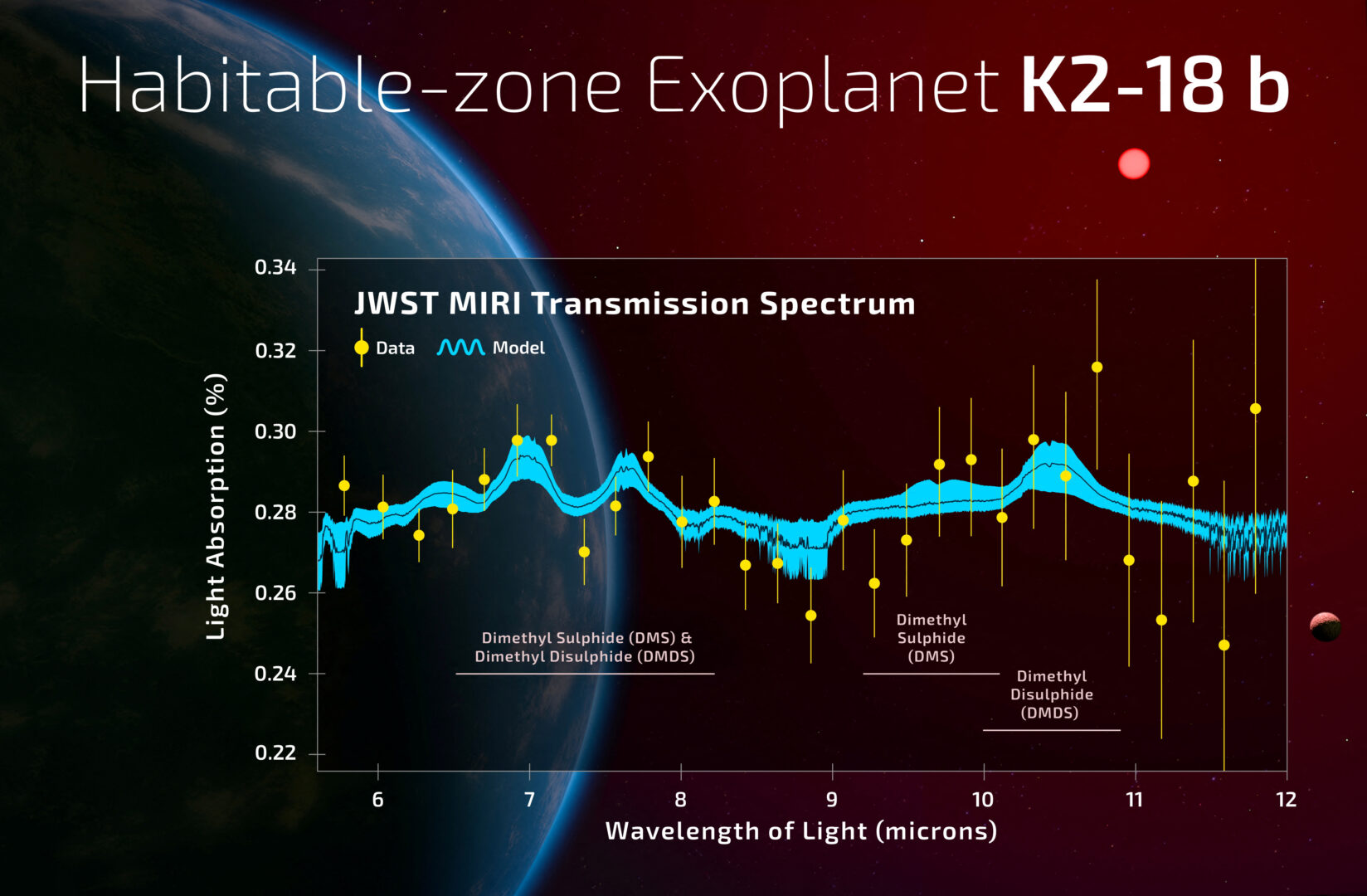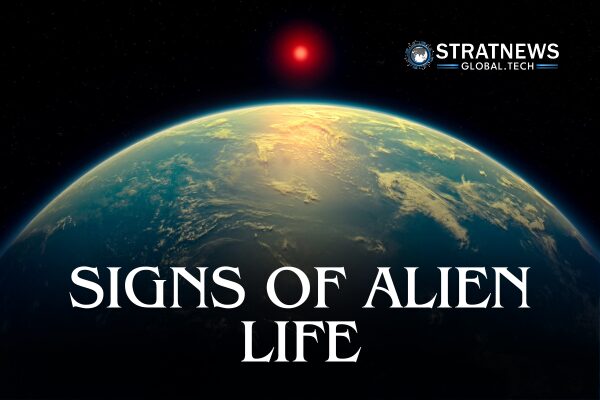Possible Signs of Alien Life Detected on Distant Exoplanet
Scientists using the James Webb Space Telescope have found compelling evidence that could hint at alien life beyond our solar system. The discovery involves the detection of gases typically linked to biological activity on Earth, found in the atmosphere of a distant planet named K2-18 b.

Unusual Gases Suggest Possible Microbial Activity
Researchers identified two specific gases — dimethyl sulfide (DMS) and dimethyl disulfide (DMDS) — in the planet’s atmosphere. On Earth, these gases are produced by marine microorganisms, particularly phytoplankton. Their presence on K2-18 b may suggest microbial life could exist there as well.
However, scientists caution against jumping to conclusions. The detection is considered a possible biosignature, meaning it could be a sign of biological activity. But more observations are needed to confirm this possibility. As of now, there is no definitive proof of life, only intriguing signals that warrant further study.
Lead researcher Nikku Madhusudhan from the University of Cambridge described the finding as a turning point. “This is a transformational moment in our search for life,” he said. “We’ve shown that biosignatures can be detected on potentially habitable planets with current technology.”
A ‘Hycean World’ in the Habitable Zone
K2-18 b is a type of exoplanet known as a “sub-Neptune.” It is 8.6 times more massive than Earth and about 2.6 times larger in diameter. The planet orbits a red dwarf star located around 124 light-years away in the Leo constellation. It lies within the star’s habitable zone, where temperatures could allow liquid water to exist — a vital ingredient for life.
Previous data from Webb had already revealed carbon-based molecules like methane and carbon dioxide in the planet’s atmosphere. The new findings strengthen the case that K2-18 b could be what scientists call a “hycean world” — a water-covered planet with a hydrogen-rich atmosphere that could support microbial life.
DMS and DMDS are considered strong biosignatures. Their concentrations on K2-18 b appear to be thousands of times higher than on Earth, making non-biological explanations less likely — though not yet ruled out.
Confirming the Findings Will Take Time
To determine the chemical makeup of distant planets, astronomers use the transit method. This involves observing the planet as it passes in front of its host star. Light from the star filters through the planet’s atmosphere, allowing scientists to analyse the gases present.
The team plans to repeat these observations multiple times to confirm their results. They aim to reduce the chance of error to less than one in a million. They also plan further research to rule out other possible explanations for the presence of these gases.
While the discovery is exciting, Madhusudhan emphasised caution. “We must stay open to all possibilities,” he said. “Our goal is not to rush to declare life, but to explore the evidence thoroughly.”
The search for life continues, and this latest finding marks a major step forward. With more data, scientists hope to learn whether K2-18 b truly hosts alien life or if another explanation lies beneath the surface.
with inputs from Reuters


